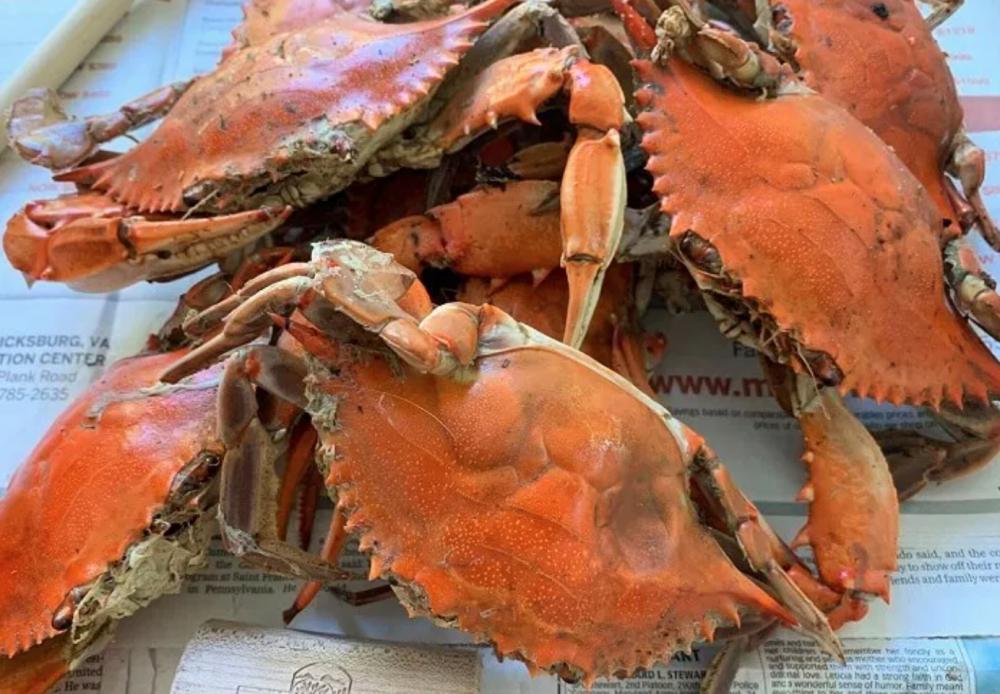Maryland’s famous crab industry is facing an uphill battle. With another year of visa caps, there’s a severe shortage of migrant workers to work as crab pickers ― and few Americans willing to do the job. This year, Maryland crabbers fear for the life of an industry that has been in their families for generations.
Only nine crab processors ― which represent 95% of the state’s crab meat production ― remain in Maryland. The processors ― or picking houses ― rely on about 500 foreign seasonal workers to pick crabmeat each year. To work in the United States those workers need H-2B visas designated for temporary non-agricultural workers.
Maryland has received about 160 visas ― 340 short of what the industry says it needs.
A History of Visa Shortages
Crab processors have struggled with visa shortages for years, mostly because of competition from other seasonal businesses, including landscaping and construction.
In 2018, demand for visas was so large that the Department of Homeland Security began awarding the visas through a lottery system.
“It was just awful,” Jack Brooks, president of the Chesapeake Bay Seafood Industries Association, said about the 2018 visa shortage. “Watermen did not have a good market. These companies could not process and there was a huge loss of consumer confidence. Your customers want to make sure they have a reliable source of fresh Maryland crab.”
In 2019, the Labor Department issued visas on a first-come, first-served basis, and all nine processors were able to get H-2B visa workers.
This year, the Department of Labor also created a lottery system for their portion of the visa process, in addition to the Department of Homeland Security lottery, creating yet another hurdle for recipients.
Brooks, who runs Cambridge-based J.M. Clayton Seafood Company, was one of three lucky crab processors who were able to get visas. His company will have 88 H-2B visa workers arriving within a couple of weeks.
“We feel horrible for our colleagues,” Brooks said. “I mean, we’ve all been locked out before and know what it’s like, and it’s just horrible.”
Very few processors in Virginia were able to secure visas, Brooks said.
Processing houses that didn’t secure visas are dark, Brooks said. “The lights are off. Here we are just almost a month into our season and the lights are out. What do they tell their customers? What do they tell their crabbers? It’s a horrific situation.”
No Local Labor Pool
At picking houses, workers scoop meat from freshly caught crabs ― the process is laborious but quick and requires much skill. Local workers shy away from working the difficult job, especially because eight out of the nine picking houses are located on Hoopers Island, a Chesapeake Bay community of about 600 residents, about a 40-minute drive from the commercial center in Cambridge.
“What college graduate can you train to pick a can of crab meat in six minutes?” said Dayme Hahn, the manager of Faidley Seafood, a famous crab cake purveyor in Baltimore. “If you sit there and watch these people, you would say, ‘I could never do that.’”
And few workers want a seasonal job. Crabbing is a heavily regulated industry, with the Department of Natural Resources deciding when the harvest starts and ends each year ― usually sometime between April and November.
“What do those people do during the seven months they can’t work? Go on unemployment?” Hahn asked. “It has been a really good relationship with southern hemisphere workers.”
Most H-2B visa recipients who work as crab pickers are women from Mexico.
“It’s extraordinarily difficult work,” said Thurka Sangaramoorthy, a cultural and medical anthropologist who studies immigration to the Eastern Shore. “And there’s a lot of pressure.”
Sangaramoorthy says the women get paid in a piecemeal fashion, by how fast they can pick. They work very long hours, living in a house with other women they usually don’t know, while leaving children and family members behind.
“The Eastern Shore can be a difficult place to live in. It’s very sparse,” Sangaramoorthy said. “For some women they enjoy the peace and quiet and the idyllic kind of setting and for others it’s very difficult.”
But, this is a really important livelihood for them, Sangaramoorthy said.
And workers are important for the life of the crab industry.
“The [H-2B visa] program really is life or death for the business, it is,” said Janet Rippons, who runs Rippons Brothers Seafood, a crab processor that wasn’t able to secure any visas this year. Rippons has lived and worked on Hoopers Island her entire life and her family has been crabbing for generations.
Rippons Brothers was one of the last companies to use the H-2B visa program, when they began doing so in 1996. Companies that decided not to use the program went out of business.
“For whatever reason, those owners and operators refused to hire foreign workers,” Brooks said. “And now they’re all gone. Each and every one of those companies are gone.”
Rippons fears that without foreign workers, that could happen again.
“Believe you me, I want to be able to find somebody so that I can provide my own products,” Rippons said. But, in the 24 years since Rippons Brothers started using the H-2B visa program, only three or four locals have wanted a job, Rippons says.
“Will we always have Maryland crab meat? I don’t know,” Rippons said. “Finding Americans that are willing to do this job, it’s not happening.”
Driven Out of the Industry
A study conducted by Maryland’s Best Seafood (a marketing program of Maryland’s agriculture department) found that, without H-2B visa workers, income for watermen would drop by $12.5 million, processors would lose $37 million to $49 million in sales, Maryland would lose 914-1,367 jobs and the overall hit to the state’s economy could be $100 million to $150 million.
“This survey reinforces what we have learned in previous years: a lack of reliable access to H-2B workers poses a major threat to the future of this iconic industry,” Maryland Department of Agriculture Secretary Joe Bartenfelder said in a press release.
“We are at the point where I honestly fear that the Maryland crab industry is at the brink of never coming back,” Hahn said. “And that’s a very scary place to be. Especially for me, who ― that’s our whole business model. Our business model at Faidley’s is Maryland seafood.”
Faidley’s has been around for 130 years ― Hahn’s great grandfather started selling seafood in 1886. And Hahn’s family has been buying from Rippons’ family, and other Eastern Shore families, ever since.
Restaurants and purveyors can import crabs from foreign countries, usually Venezuela, more cheaply. They can also import from other states. But, many local restaurants want Maryland crab.
Brooks says commercial crabbers will have a hard time making a living, with few workers to process their factory crabs.
“It’s going to be depressed,” Brooks said. “There will be days they can’t sell their catch at all, and there will be days they can only sell part of their catch.”
Hahn says watermen will continue to catch crabs for processors that have pickers, and for people who want to steam them and eat them at home. But, with expenses like gas, docking and licensing, Hahn fears that it will push many out of the industry.
“They’re going to have to go to another industry to make a living,” Hahn said. “And some of them ― by the end of this year ― will have decided to get out completely.”
What’s more, Hahn says, is that you are either raised in the industry and know what to do, or you aren’t. Hahn fears that if this generation of watermen leaves the industry, there won’t be another.
‘A Critical Matter’
Brooks is working with Maryland’s U.S. Sens. Chris Van Hollen and Ben Cardin, both Democrats, and U.S. Rep. Andrew Harris (R-Cockeysville) to find a permanent fix.
Industry advocates say that seafood shouldn’t be grouped with landscape and construction just because their food cannot be grown (agriculture receives H-2A visas, and is exempt from any sort of cap). They want the visa cap removed. And they want exemptions for returning workers, who usually go to the same employers every year.
The industry used to have an exemption, but it expired and hasn’t been taken up again.
A letter to the Department of Homeland Security ― signed by seven senators, including Van Hollen and Cardin ― called the visas a “critical matter.”
“Local seafood businesses earn their livelihoods based on perishable products and need H-2B workers to harvest and process their respective seafood products so they can sell those products,” the senators wrote. “If these local businesses lose a customer base one year, it is extremely difficult, if not impossible, to come back into the industry.”
For purveyors, processors and watermen, the situation looks dire. Even with a slowed economy due to the COVID-19 pandemic, the industry fears it will be scrambling for workers when demand picks up when things start back up.
“The whole Maryland crabbing industry is teetering on collapse,” Hahn said. “And, you know, when I listen to Janet Rippons and I listen to Jack Brooks, or I listen to these people down the Shore, my heart bleeds. Not just for them, but for us.”
By Samantha Hawkins





